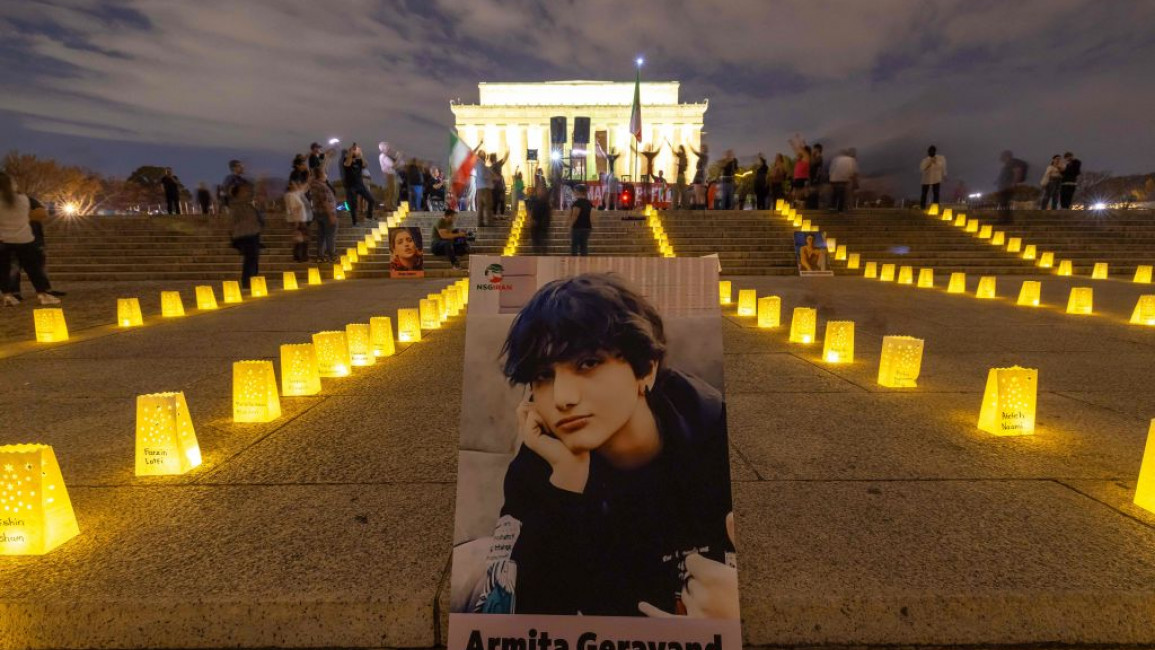Baffling gaps in Iranian officials' explanation over Armita Garawand's death
After 27 days of being in a coma, on 28 October, Iran's state-run news agency, IRNA, confirmed that Armita Grawand, 16, had died, raising significant questions about the official narrative provided by authorities regarding her case.
Influenced by rights groups' reports, members of the Iranian public assert that Armita fainted after an encounter with special security officers responsible for enforcing the hijab law in Tehran's metro. According to this narrative, it is believed that she was pushed, leading to her fall and ultimately causing her head injury.
As details surrounding the incident emerge, several factors have kindled doubt among the public. However, the government maintains that Armita fainted due to low blood pressure, but this explanation has failed to quell scepticism.
One of the gaps in the case is the refusal of the metro authorities to release any video footage from inside the train. The absence of such evidence has left the public in the dark and fueled suspicions that there may be more to the story.
In an interview with the state-run IRNA news agency, Armita's mother expressed her uncertainty about the incident's cause. According to her, officials told her that Armita had fainted due to low blood pressure. Her hesitation and the fact that she does not have clear information about what occurred to her daughter have raised more questions.
In that interview, Armita's mother said, "There [inside the metro], my daughter, ehh, I think, her pressure… I don't know, her blood pressure fell or … I think now they said her blood pressure fell, okay? Her blood pressure fell or … anyways, she fell off, and her head hit an edge in the metro."
Another aspect that has raised eyebrows is the decision to transfer Armita's unconscious body to a military health centre, Fadjr Hospital when two other civilian hospitals were closer to the incident location. The choice to transport her to an army facility instead of the nearest medical centres has left many wondering about the reasoning behind this decision.
As public demand for information about Armita Garawand's case intensifies, an unsettling development has been the noticeable presence of police, undercover agents, and members of the Islamic Revolutionary Guard Corps (IRGC) in and around the hospital where she is admitted. This heightened security presence has raised concerns about efforts to control the flow of information and restrict access to Garawand's family and medical staff.
Media access to the hospital has also been severely limited. Despite mounting public interest and calls for transparency, officials have imposed strict restrictions on journalists seeking to cover the case. Maryam Lotfi, the only journalist who gained access to the hospital in recent days, was detained by intelligence officers. While she was eventually released, she could not publish any information about the case.
This incident unfolded on the anniversary of the death of Mahsa Amini, who died in the custody of the Islamic morality, locally known as Gasht-e Ershad. The timing of Garawand's case has further heightened public sensitivity while many took on social media condemning the establishment's brutality against the citizens.
"Gasht-e Ershad killed Mahsa in their [police] vans, the Hijab Custodian did the same with Armita in the metro," wrote one Iranian social media user, referring to new security forces Tehran municipality deployed in the metro under the name of Hijab Custodians.



